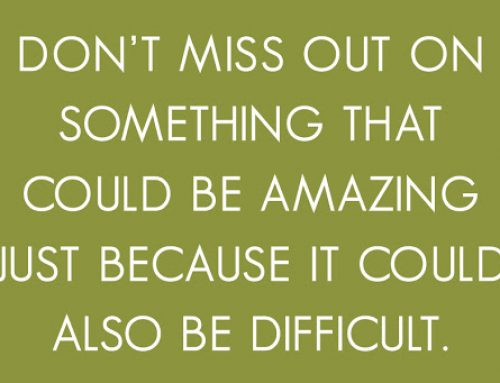In the first chapter of Changing Childhood, Changing Media of Professor Sonia Livingstone’s book Children and the Internet: Great Expectations and challenging realities we get a glimpse into the challenges and opportunities faced by our children today. Professor Livingstone of the London School of Economics brings to our attention that it is our responsibility as a society to understand that children need to continue and develop and mature in the natural ways that have existed even prior to exposure of the Internet with all its benefits. Even though we have seen major advancements in technology since the early 1990’s the natural development of children has to take its course. Livingstone clearly points out that the development of the Internet has created opportunities for various sections of society to develop relation between themselves and the Internet. For the most part we have seen great societal improvements that have expanded our knowledge and have had great impact to various disciplines. Yet Livingston cautions us as she writes” Children’s experiences, needs and concerns matter in their own right, requiring a critical analysis in the present” Even though it may seem to us that children today have been mastering these new tools, Livingstone cautious and points back to Paiget’s stage and theory of cognitive development that is so vital for the well-being of members of our future workforce.
Each day children are having experiences that take in various surrounding; school, home, etc. In theses surrounding the children also known as “digital generation”, are exposed to information and content that they have to grapple with. Livingstone suggest that it’s important that we understand how children learn and engage online/ She points out that there are many risks and practitioners have a responsibility to develop theories and assessments to study the online risk factors of children engagement in these online activities. Livingstone points out that we should carefully study how those children already online are taking advantage of the vast opportunities and portals to knowledge while treading carefully and avoiding the risks they may encounter. Livingstone points out that currently there is not enough research available to show the benefits of Internet use by children. She does point out that despite the fact that there are known risks, today’s children are becoming media savvy experts. The facts that children can access the tools on the Internet is not enough for Livingstone. She is more concerned with questions relating to whether or not the online tools and websites are contributing to helping children engage with their environments in a productive way. Livingstone argues that researches need to shift their focus from Internet accessibility studies to those that evaluate the quality and see how and if the Internet is serving/helping the needs of child development.
One of the questions posed by Livingstone how do we understand the background influences that cause children to spend a great amount of time on the internet? She points out through her examples of studies that today children are “launching” much later than those in previous generation. These children seem to have a greater financial dependency on their parent even though these same kids choose to keep their online activities separate and private in access to their parents view. The internet exposes children to the consumerism that is rampant. As she points out” 9-13 year olds would rather spend time buying things … and they say the only job I want when I grow up is one that gets me a lot of money”. By bringing this to our attention Livingstone is reminding us that there have been major shifts in family values. With these changes the traditional forms of family and community support structure have either dwindled or have transformed.
Governance of the internet has been looked at by various groups. Livingstone points to a 2004 UK ruling that is supposed to reinforce the rights of children to a healthy, safety, enjoyment and achievement through positive contributions and economic well-being. I particularly enjoyed her mentioning the UNICEF quote that says “the true measure of a nation’s standing is how well it attends to its children”. I was alarmed by the numbers Livingstone share about the rise in depression, stress and suicide rate among children. You would think that being connected would increase social interaction and connectivity. However freedom of expression and use of technology does not mean that normal issues associated with children are not still at the center of our concern.
Open access to content has led children to explore what Livingstone terms “the adult world”. She points out that online activities are leading to a decrease in the value and importance of face to face relationships as she refers to it as “horizontal connections” that are multiple yet can be very limiting in depth . even though Livingstone refers to children as being ” cultural pioneers” of using new media for social exploration and expression and we can see through the content they absorb that the media relates to the interest of young people there are many risks. Livingstone even goes as far and labels children as a risk society. She quotes Beck who stated “modernity has become the threat and the promise of emancipation from the threat that it creates itself”. She brings other examples by researcher who stated that the home becomes a sanctuary for children’s safe exploration and leisure, resulting in an increase use of rich media in the home as a way to compensate. These issues combined with t6he need for normal child development can lead to questions regarding the impact of technology on child development. Livingstone shows us that even though some of the technology has only been around since the mid 70’s it still has had a large impact on child development. She is primarily concerned about the implications of social and educational development of children. How do we accurately find the balance between risk and opportunities found on the internet? We now that the internet creates R&O for children in relation to social, cultural, educational, civic, health and other aspects of their everyday life. The multi functionality of the internet creates an increase in both problems and solutions.
However we look at it Livingstone reminds us that all forms of media mediate between the person with the message and the recipient. All of the media children are exposed to are shaped in certain ways based on the person or organization delivering the message. Children are given an open platform to express themselves, socialize, and engage in communities of other likeminded folks. However we must ask do benefit out way risk? Livingstone presents side by side 13 line items for both benefits and risks. She does point out that there is not an equal balance between these two lists as sometimes the risks do grow with intensity such as: bullying, harassment, privacy invasion and more. Online content accessed by children often creates situations where children do not have the tools or the capacity to process what they have engaged with. Livingstone tries to bring the blass back to society and inform us that it is the responsibility of the societies where children are that should take ownership on helping evaluate and assess what challenges opportunities, support systems should be made available for our children. If we are to have high expectations for our children we must provide them the scaffoldings that will allow them to reach these goals in a safe way.
Livingtone, S. (2009). Livingstone Chapter 1 (pp. 1 – 32). Children and the Internet. Malden: Polity Press.
I have included the clip below to inspire you. It was brought to my attention by Dr. McCarthy in LSC 520.


























